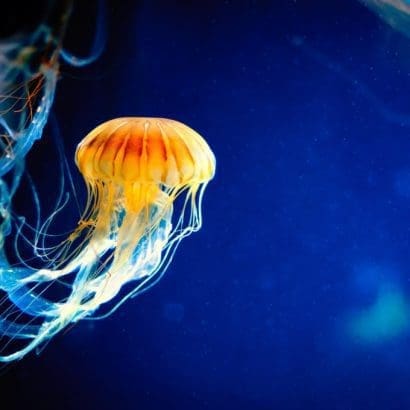
Great white sharks, with their powerful presence and formidable reputation, have captivated the imagination of people around the world. These majestic creatures, known for their sleek bodies and rows of razor-sharp teeth, roam the oceans, instilling both fear and fascination. One question that often arises among shark enthusiasts and researchers is: Where is the largest concentration of great white sharks found?
Exploring the whereabouts of these apex predators is not only a matter of curiosity but also essential for understanding their behaviors, habitat preferences, and ultimately, their conservation. By identifying the areas with significant great white shark populations, scientists can focus their efforts on studying and protecting these vital ecosystems.
Contents
False Bay, South Africa.
False Bay, located on the southwestern coast of South Africa, is a renowned destination for shark enthusiasts and researchers, primarily due to its significance as a concentration point for great white sharks. This picturesque bay stretches approximately 30 kilometers (19 miles) from Gordon’s Bay to Cape Point, offering a unique and diverse marine environment.
False Bay’s strategic location plays a crucial role in attracting great white sharks. The bay is situated along the migration routes of several marine species, including seals, dolphins, and various fish species, which serve as a primary food source for the sharks. The combination of abundant prey and suitable environmental conditions creates an ideal habitat for these apex predators.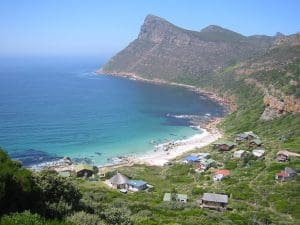
One of the key features of False Bay is the presence of the famous Seal Island, located just off the bay’s coast. This small island serves as a critical breeding ground for thousands of Cape fur seals. The seals provide a consistent and accessible source of food for the great white sharks inhabiting the area. As a result, Seal Island has become synonymous with thrilling shark cage diving experiences, attracting adventurers and nature enthusiasts from around the world.
Importance as a concentration point for great white sharks.
In addition to its importance as a gathering point for great white sharks, False Bay offers breathtaking coastal scenery, making it a popular destination for tourists and nature lovers. Visitors can enjoy pristine beaches, dramatic cliffs, and an abundance of marine life. Along with shark cage diving, activities such as whale watching, snorkeling, and exploring the diverse marine ecosystem are also available in this region.
It is worth noting that while False Bay is known for its significant concentration of great white sharks, encounters with these creatures are largely controlled and regulated to ensure the safety of both humans and the sharks. Strict guidelines and responsible tourism practices are in place to protect the natural balance of the ecosystem and minimize any potential negative impacts.
Guadalupe Island, Mexico.
Guadalupe Island, located off the western coast of Mexico, is a captivating destination renowned for its significant role as a concentration point for great white sharks. This volcanic island, situated in the clear waters of the Pacific Ocean, has gained international recognition as one of the premier locations for encountering these majestic apex predators.
The isolation and unique geographical features of Guadalupe Island contribute to its importance as a gathering ground for great white sharks. The island’s steep cliffs and rocky coastline provide an ideal habitat for the diverse marine life that attracts these sharks. Additionally, the nutrient-rich waters surrounding the island support a thriving ecosystem, with an abundant population of seals, sea lions, and various species of fish, serving as a primary food source for the great white sharks.
The exceptional visibility and pristine diving conditions make Guadalupe Island an ideal location for studying and observing great white sharks. Researchers and wildlife enthusiasts from around the world flock to this remote destination to witness these awe-inspiring creatures in their natural environment. Guadalupe Island offers unique opportunities for cage diving, allowing visitors to safely encounter and observe the sharks up close, while minimizing any disturbance to their natural behavior.
Importance as a concentration point for great white sharks.
The significance of Guadalupe Island extends beyond its appeal to adventure seekers. The scientific community recognizes the island’s importance as a research site for studying great white shark behavior, population dynamics, and migratory patterns. By collecting data and monitoring the sharks’ movements around the island, scientists can gain valuable insights into the conservation and management of this iconic species.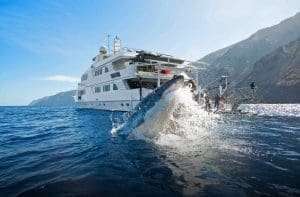
Conservation efforts are paramount in Guadalupe Island, with strict regulations in place to protect the natural habitat and ensure sustainable interactions with great white sharks. Tour operators and researchers adhere to responsible ecotourism practices, prioritizing the well-being of the sharks and the preservation of their delicate ecosystem.
Stewart Island, New Zealand.
Stewart Island, located off the southern coast of New Zealand, is a captivating destination known for its remarkable role as a concentration point for great white sharks. This rugged and remote island, also known as Rakiura in the Māori language, offers a unique and pristine marine environment that attracts these majestic apex predators.
The surrounding waters of Stewart Island provide favorable conditions for the presence of great white sharks. The island’s location in the southern Pacific Ocean places it along the migratory routes of various marine species, including seals and sea lions, which serve as a vital food source for the sharks. The abundance of prey combined with suitable environmental factors creates an ideal habitat for these awe-inspiring creatures.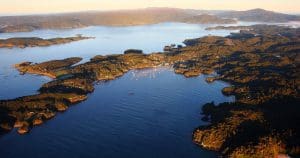
Stewart Island’s rich and diverse marine ecosystem plays a crucial role in attracting great white sharks. The surrounding waters are home to an array of fish species, creating a thriving food chain that supports the sharks’ presence in the area. The island’s seafloor topography, characterized by underwater canyons and deep channels, further contributes to the concentration of these apex predators.
Importance as a concentration point for great white sharks.
Aside from its importance as a concentration point for great white sharks, Stewart Island is known for its pristine beauty and abundant wildlife. The island is home to stunning landscapes, including dense forests, golden beaches, and rugged coastlines. Visitors to Stewart Island can explore its natural wonders, engage in hiking trails, and immerse themselves in the untouched wilderness.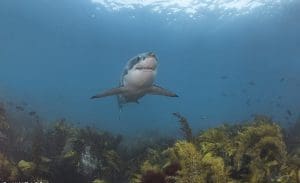
Conservation efforts are paramount in Stewart Island to protect the delicate balance of the marine ecosystem and the species that call it home. Responsible tourism practices, strict regulations, and ongoing research contribute to the preservation and sustainable management of the area’s great white shark population.
The importance of conservation and protection of these species.
In conclusion, the significance of conservation and protection efforts for great white sharks and other endangered species cannot be overstated. These apex predators play a vital role in maintaining the balance of marine ecosystems, regulating populations of prey species and contributing to overall biodiversity. By safeguarding their habitats and implementing sustainable practices, we not only ensure the survival of these magnificent creatures but also preserve the integrity of the oceans as a whole.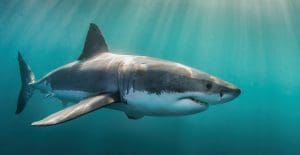
Furthermore, understanding and protecting great white sharks can have a cascading effect, promoting awareness and action for the conservation of other vulnerable species and the preservation of fragile marine environments. It is our responsibility to act as stewards of these incredible creatures and work towards a future where they can continue to inspire awe and contribute to the richness of our planet’s biodiversity.

